Where to store bedding - the best places to keep duvets, pillows and bed linen around the house
Experts share their top tips to avoid that musty smell when storing bedding at home
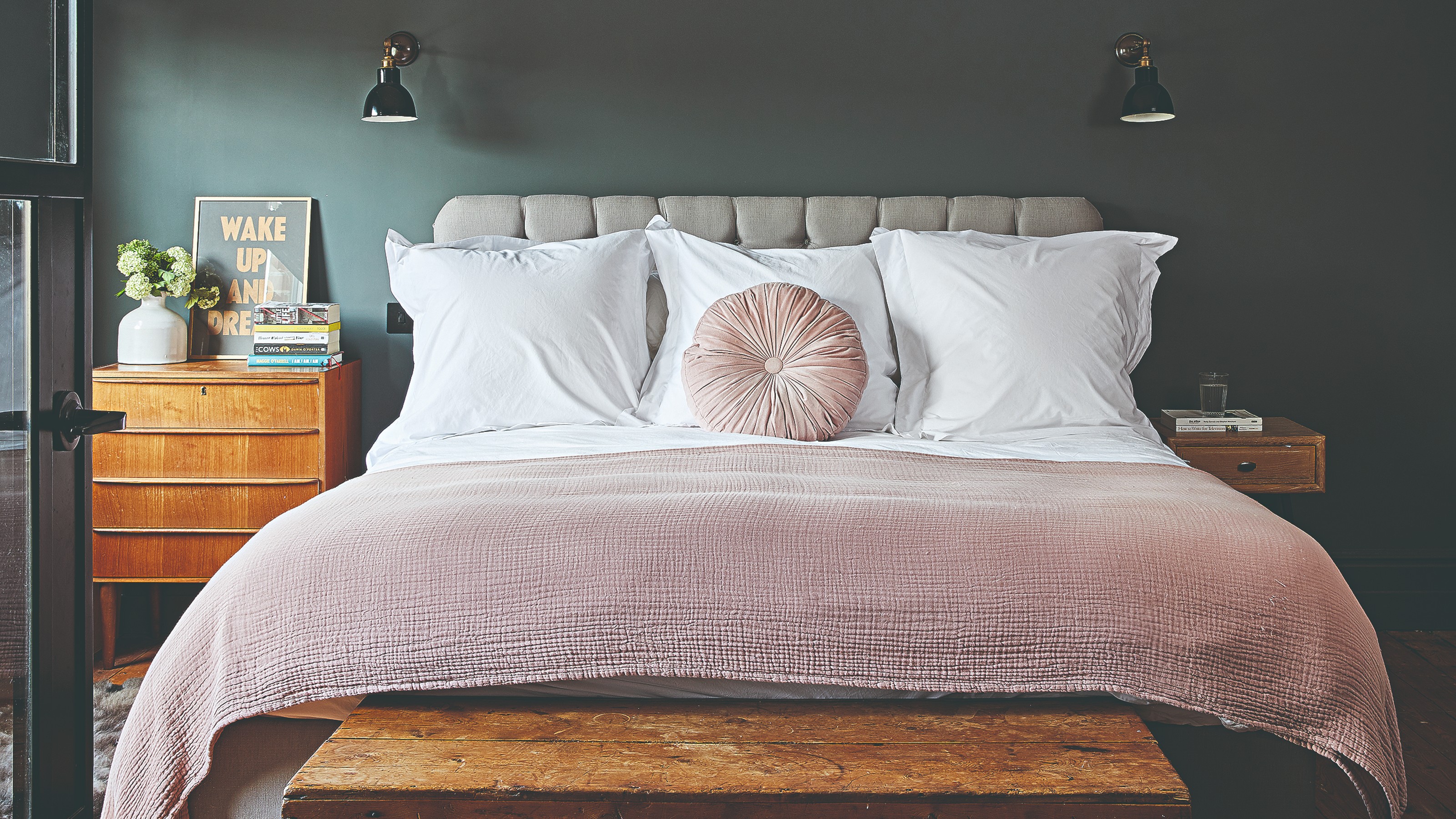

Bedding and bed linen takes up a lot of space when it’s not in use. Not to mention it’s tricky to keep it fresh so you get that “fresh sheet” feel on your bed linen every time, or preventing a musty smell when storing a duvet for a while. But help is at hand.
You might be wondering how to organise bedding. As a sleep-product writer with around three years of experience, I’ve got a lot of experience in this.
Along with my personal expertise, I’ve spoken to leading bedding brands and home-organisation experts to get their tips and tricks. Here’s the gold standard for storing bedding.
Where is the best place to store bed linen?
Whether you’re storing bedding or duvets, you need a dry place where air can circulate.
‘The best place to store bed linens and bedding is in a cool and dry environment that offers good air circulation,’ says Kate Edmondson, founder of home-organisation service Home Edited. ‘Ideal spaces would be an airing cupboard or designated linen cupboard. Just be sure to avoid areas such as attics or bathroom spaces as these areas can be humid and/or damp and over time can cause mould, mildew and musty smelling linens.’
‘It’s best to store bed linen in a dry linen closet,’ agrees Sue Spencer, owner of A Life More Organised and is a KonMari Master consultant.
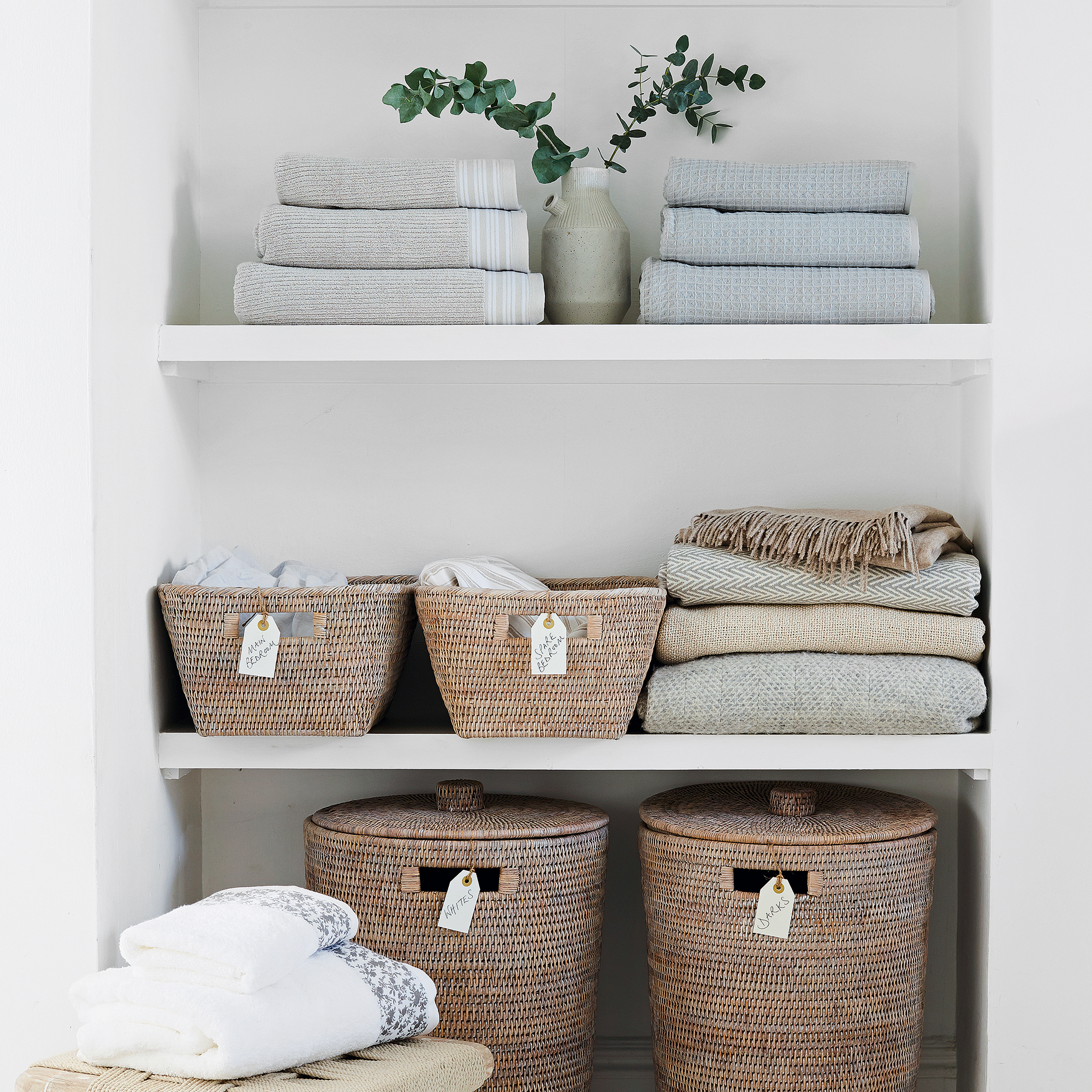
‘I like to make sure the different sets of bedding are organised either by size or bedroom so that it’s easy to put them away after washing – and easy to grab them to change the bed,’ continues Sue from A Life More Organised. ‘Or, if you don’t have a large airing cupboard then store the spare set of bedding in the room where it will be used. An ideal space would be in a breathable cotton bag in the drawer under the bed or a dedicated drawer in a chest of drawers.’
Kate from Home Edited advises: ‘The use of bed linen organisers will contain linen sets together, enhancing visibility and accessibility whilst keeping your linens organised.’
‘A great tip for containing linen sets together is using the sets pillowcase to keep bed sheet and duvet cover together,’ says Kate from Home Edited. ‘Folding the duvet and sheet and placing them inside the pillowcase creates an easy grab-and-go when it’s linen-change-over day.’
Where is the best place to store a duvet?
There are plenty of things to consider when thinking about how to store a duvet. They’re big for a start, so require adequate storage space that’s breathable.
But before you pack away your duvet, it’s a good idea to do a bit of prep so it’s ready when you need it again. After all, you’ve invested in the best duvet you could – you want to it be fresh as a daisy when you unpack it again.
‘Make sure that if you’ve washed a seasonal duvet before packing it away that it's completely aired and dry as any residual moisture will turn musty over time,’ advises Sue from A Life More Organised.
‘The best place to store bed linen is in a dry, and dark area with good airflow, such as an airing cupboard or wardrobe ideally,’ says Wendy Miranda, Customer Ambassador at Lakeland. ‘You should avoid storing bedding in humid areas like bathrooms, attics, sheds, or garages, where moisture can cause mold and mildew.’
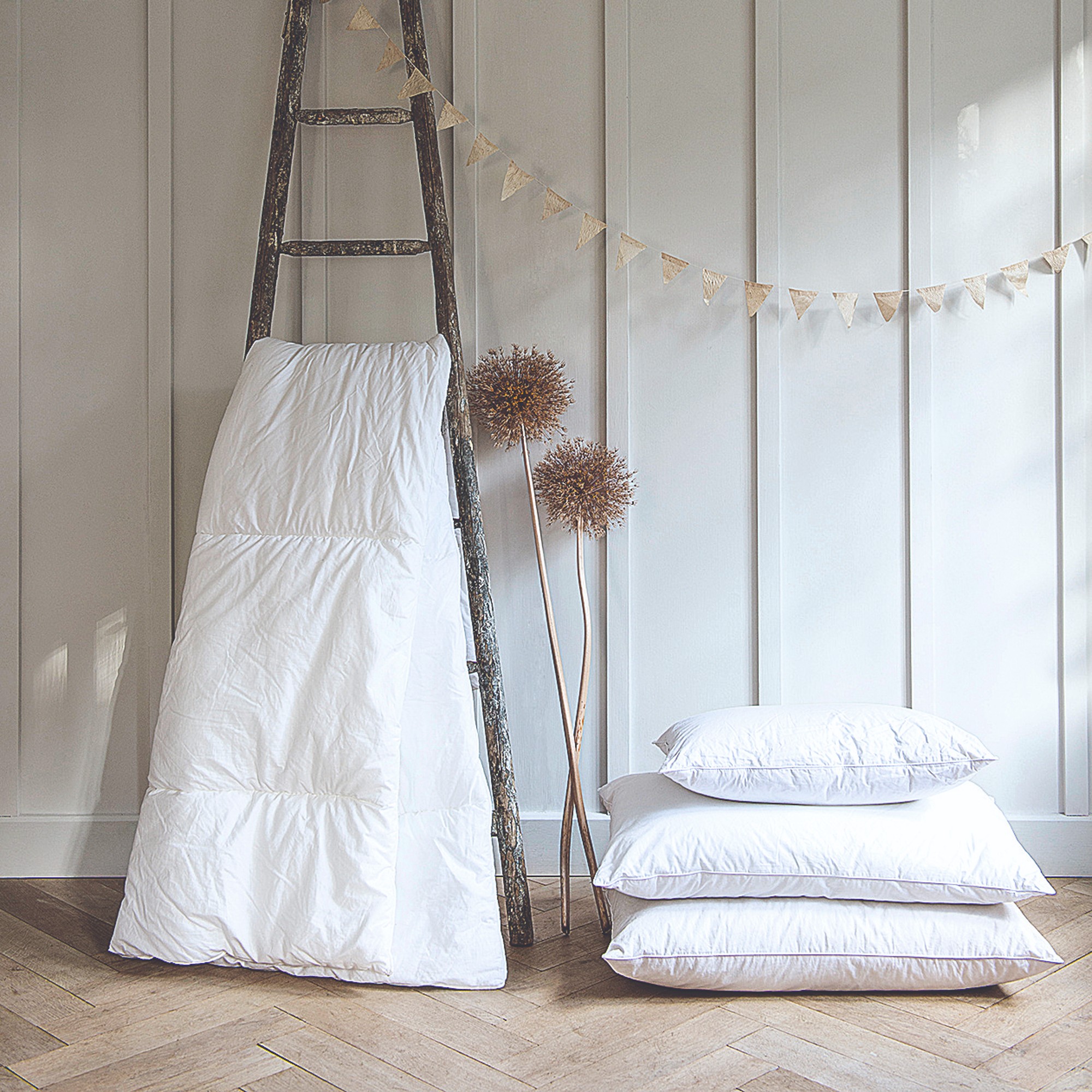
‘Sometimes space can be limited when organising our bedding, so utilising spaces in our bedrooms such as wardrobe shelving or under an ottoman bed can make for great storage alternative to a designated linen or airing cupboard,’ says Kate from Home Edited.
‘Keep like items together and avoid plastic storage solutions as these won’t allow air to circulate,’ says Home Edited’s Kate. ‘Opt for the use of breathable storage, which will allow air to circulate preventing moisture buildup, while covering items to minimise dust. Breathable materials include cotton, linen, recycled polyester, as well as polypropylene. Be sure to order the right size storage for what you are looking to store and label for easy identification.’
Home Edited’s Kate recommends these affordable polypropylene storage bags for storing duvets from IKEA.
Where is the best place to store pillows?
Pillows are very similar to duvets in where you can store them. Somewhere cool and dry with plenty of ventilation is going to keep them in tip-top condition, so you still have the best pillows when you need them.
‘I recommend storing both duvets and pillows in cotton storage bags as this protects them from dust and dirt,’ says Sue from A Life More Organised. ‘This is especially important if you are storing spare bedding in an ottoman bed as these storage spaces are notoriously dusty.’
Soak & Sleep sell these fantastic pillow storage bags that are perfect for the job.
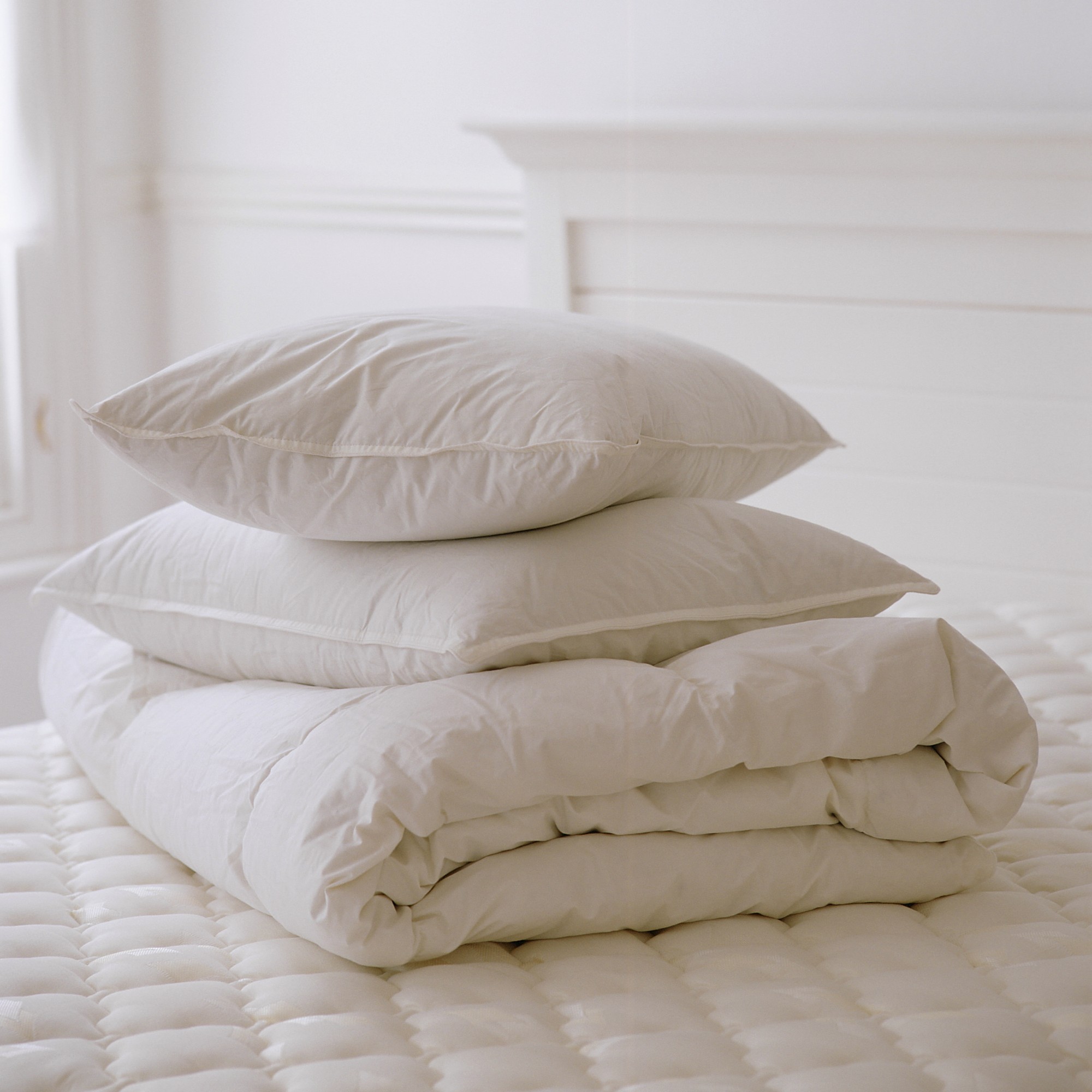
FAQs
Should you store bedding in vacuum pack bags?
If you have feather and down duvets and pillows, you’re best off avoiding vacuum-pack bags. The quills of the fillings often get damaged when compressed, and unless the duvet and pillows are absolutely bone dry, the moisture can cause mould to grow in your bedding.
However, if your bedding is totally dry and not made from down, then it’s a good space-saving idea.
‘Not only is this space-saving, it also keeps the contents free of dust and moisture, meaning they emerge in the same condition in which they went in,’ says Wendy from Lakeland. ‘Some may feel it’s an extra step too far but others love to do this.’
These Lakeland vacuum tote bags are perfect for the job. I use these to store away summer duvets in winter and they do a fantastic job.
Should you store bedding in a bedroom?
It depends on what your bedroom is like. If it’s damp – perhaps if you air laundry in there – then it’s not ideal.
‘You can store bedding in your bedroom,’ says Wendy from Lakeland. ‘But it’s best to keep it in a cool, dry and well-ventilated area. So depending on your bedroom and storage options you have, it may be best to keep it in an airing cupboard for example if you have one.’
‘If you have space to [store bedding in your bedroom] this then it makes sense to have products close at hand for the regular bed linen change,’ says Simon Glanville, managing director at A Place for Everything. ‘But otherwise store on top of a wardrobe or under a bed – or in a spare bedroom if you have the space.’
‘[This is fine], especially in kids rooms as it makes the emergency change of bedding in the middle of the night much easier,’ says Sue from A Life More Organised. ‘Avoid storing near radiators as this can make the bedding storage humid, which may lead to mildew if the bedding wasn’t completely dry when it was put away.’
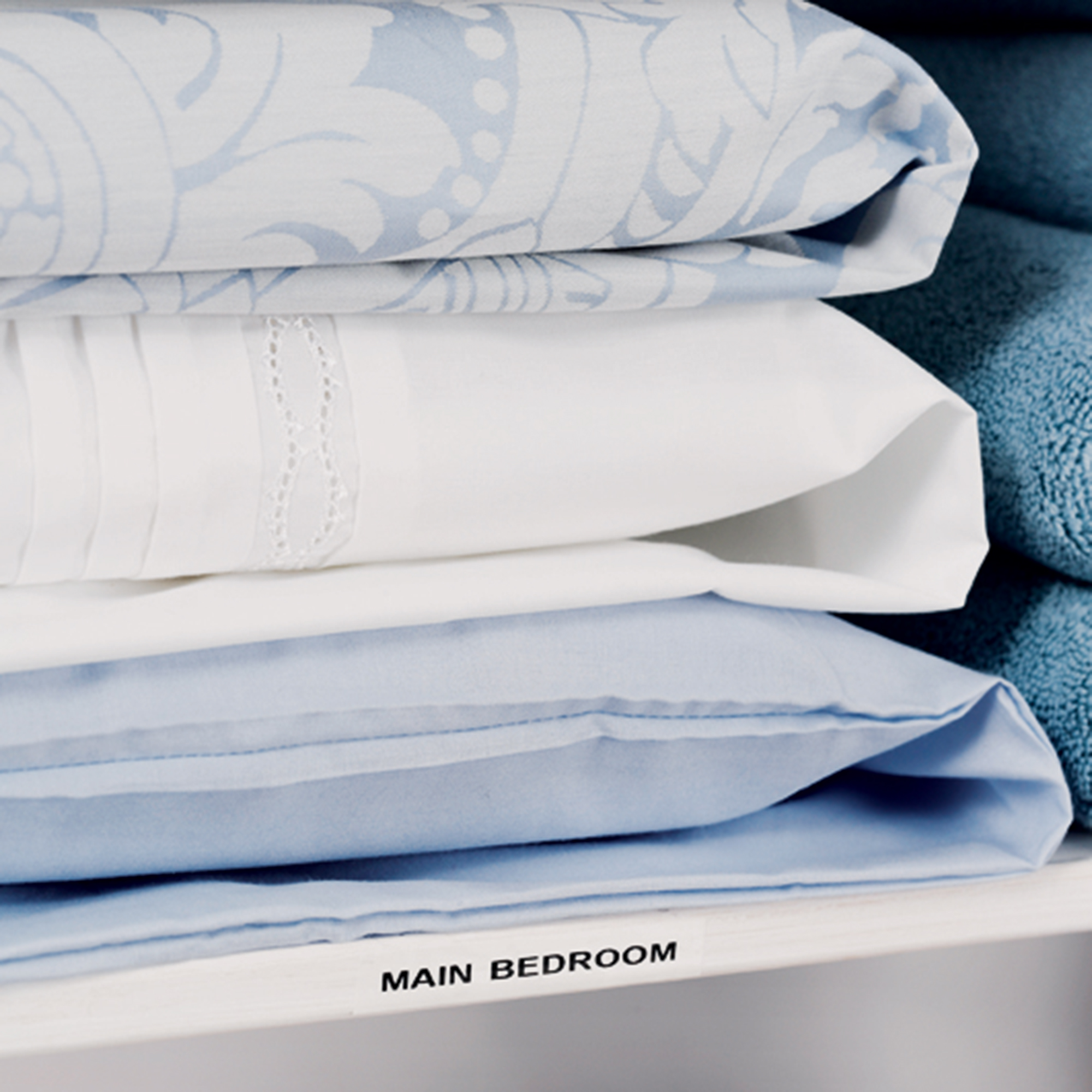
How to keep stored bedding smelling fresh?
‘I like to use drawer liners to keep clothes and bedding smelling fresh (and prevent moths),’ says Sue from A Life More Organised. ‘I’ve also used tumble dryer sheets - but you need to be careful as some can leave an oil-like residue if you leave them directly on the bedding (as do essential oils).
‘Sachets of lavender or cedar (like those used to prevent moths) are also a good alternative,’ continues Sue. ‘If you are worried about dampness then baking soda or silica gel sachets are great. It’s worth noting that all these solutions have a shelf life and the fragrance fades so it’s worth regularly checking - the change of seasons is a great reminder to refresh them.’
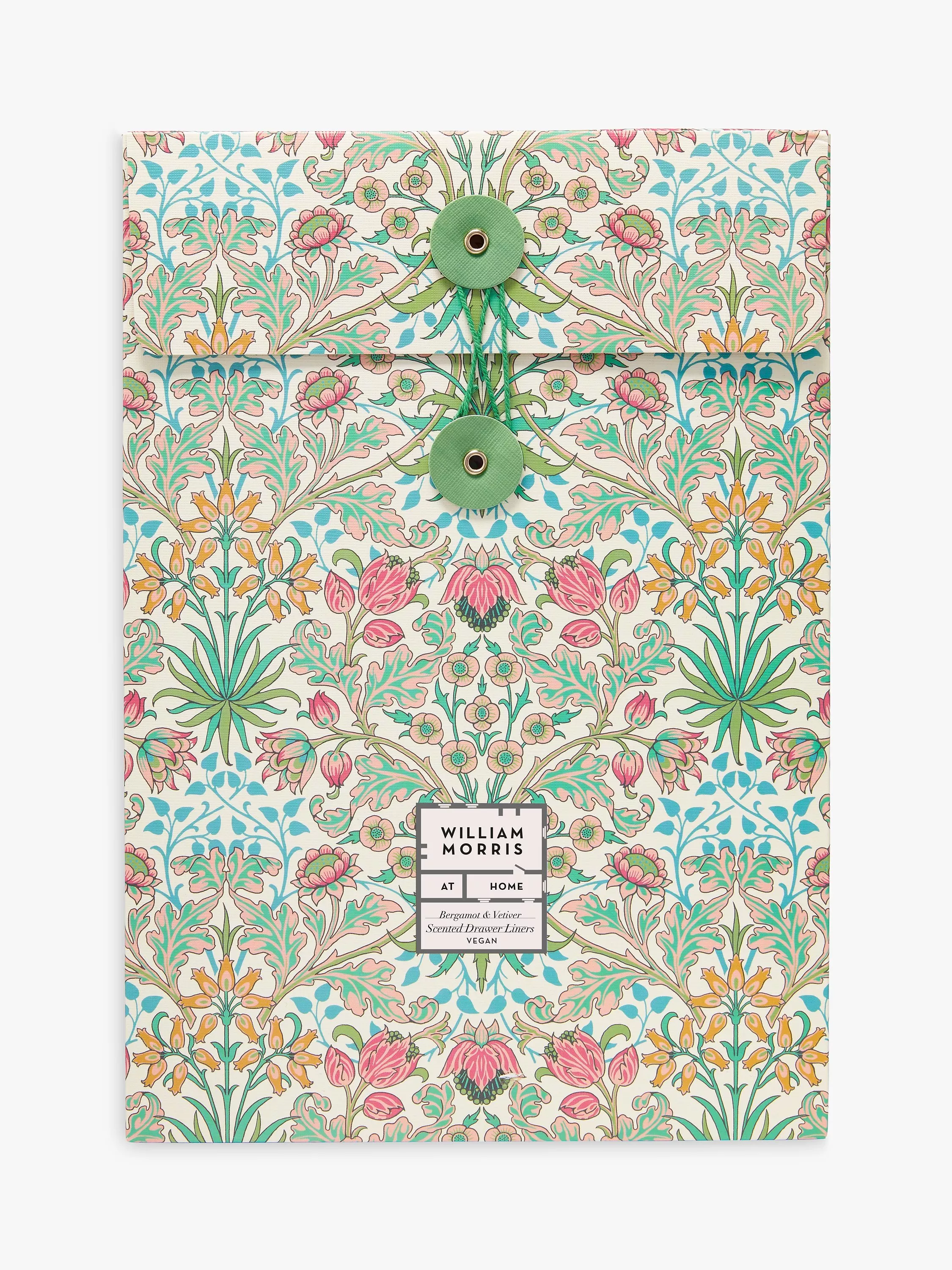
Scented with Bergamot & Vetiver, these drawer liners are beautiful and lovely smelling
Why do bed sheets smell after being stored?
This tends to be an indicator you’ve not done all the groundwork mentioned above before storing away. Perhaps the items were not totally dry before storing away, or you’ve stored them somewhere where air can’t circulate around the fibres.
‘This might be because they hadn’t dried properly before they were put away. Make sure they’re completely dry or aired thoroughly before storing them,’ says Wendy from Lakeland.
‘Giving your linen and bedding space to breathe when storing is paramount to avoiding musty smells developing over time,’ agrees Kate from Home Edited. ‘So be sure to avoid overpacking shelving to allow airflow and make sure that they are thoroughly dry before storing away. The use of scented paper or dryer sheets between the linens can help minimise unpleasant smells developing over time.’
If items have become very damp or moth-eaten, then you might wondering where to buy bedding from. Remember to go for the best bedding you can afford as you’re investing in better sleep when buying bedding.
Get the Ideal Home Newsletter
Sign up to our newsletter for style and decor inspiration, house makeovers, project advice and more.

Zoe is a freelance journalist and content strategist. Her career has traversed kids' publishing, women's lifestyle magazines, luxury property and content marketing. She's worked for the BBC, STYLIST, Marie Claire, heat, Wallpaper*, InStyle, The Sunday Times Style, Ocado, Christie's and more. She now regularly writes about interiors and sleep for a range of media – what she doesn't know about mattresses isn't worth knowing.
-
 George Home’s sold-out striped parasol is finally back in stock - but this elegant design is expected to sell out again fast
George Home’s sold-out striped parasol is finally back in stock - but this elegant design is expected to sell out again fastI can't get enough of its whimsical design, too
By Kezia Reynolds
-
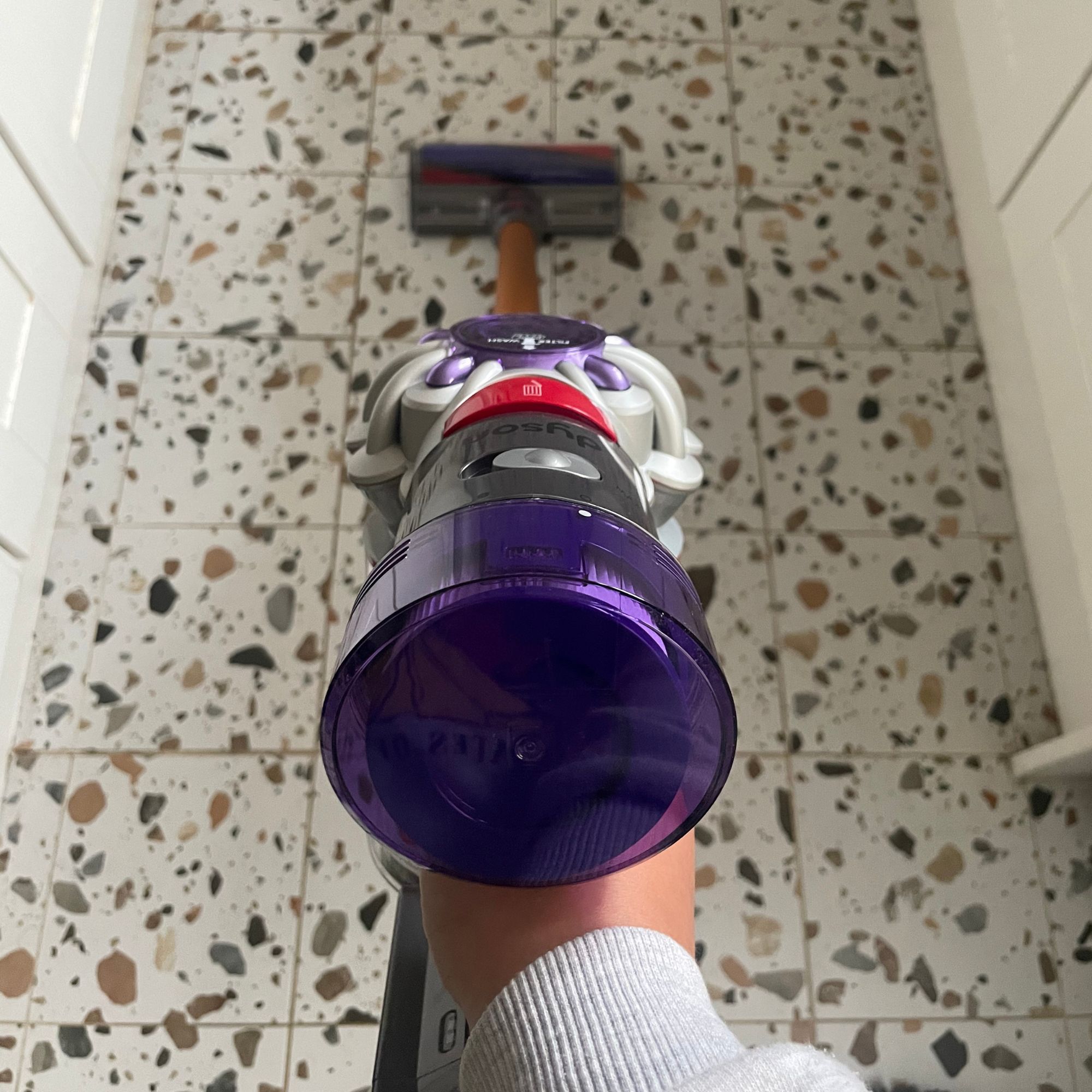 I asked a Dyson engineer how you can avoid these common Dyson vacuum cleaner problems — and how to make the most of your machine
I asked a Dyson engineer how you can avoid these common Dyson vacuum cleaner problems — and how to make the most of your machineFrom a loss of suction to poor battery life, I asked the questions to get the answers you need
By Lauren Bradbury
-
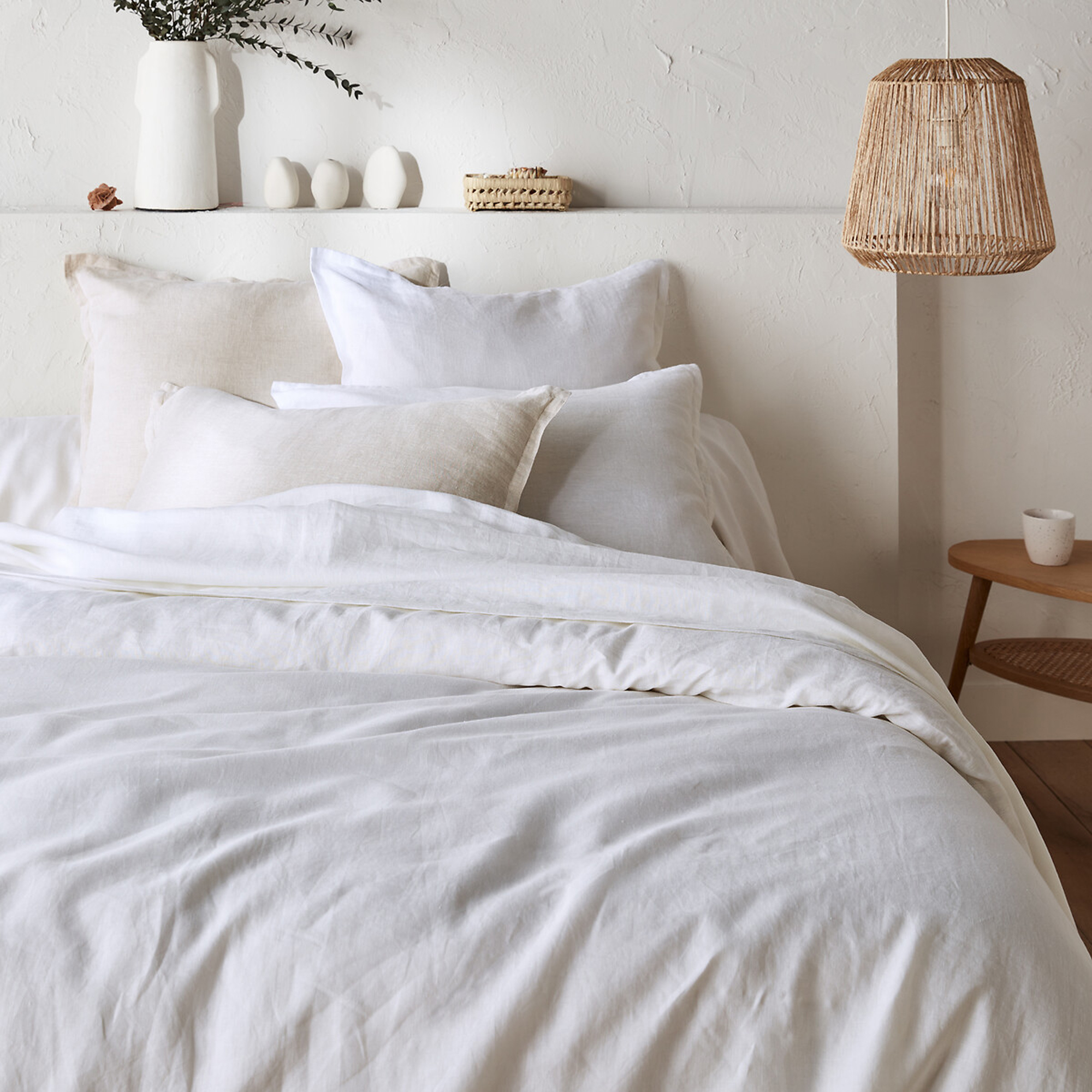 'I've now bought 3 different colours' – my favourite affordable linen bedding is currently half-price, and the 5-star reviews speak for themselves
'I've now bought 3 different colours' – my favourite affordable linen bedding is currently half-price, and the 5-star reviews speak for themselvesThe half-price linen bedding that owners can't stop raving about
By Amy Lockwood
-
 'I've now bought 3 different colours' – my favourite affordable linen bedding is currently half-price, and the 5-star reviews speak for themselves
'I've now bought 3 different colours' – my favourite affordable linen bedding is currently half-price, and the 5-star reviews speak for themselvesThe half-price linen bedding that owners can't stop raving about
By Amy Lockwood
-
 Want to cook like Jamie Oliver? This is the top-rated casserole he uses from his own collection all the time on Instagram
Want to cook like Jamie Oliver? This is the top-rated casserole he uses from his own collection all the time on InstagramJamie's collaboration with Tefal has led to this casserole dish getting the best user reviews I've ever seen
By Molly Cleary
-
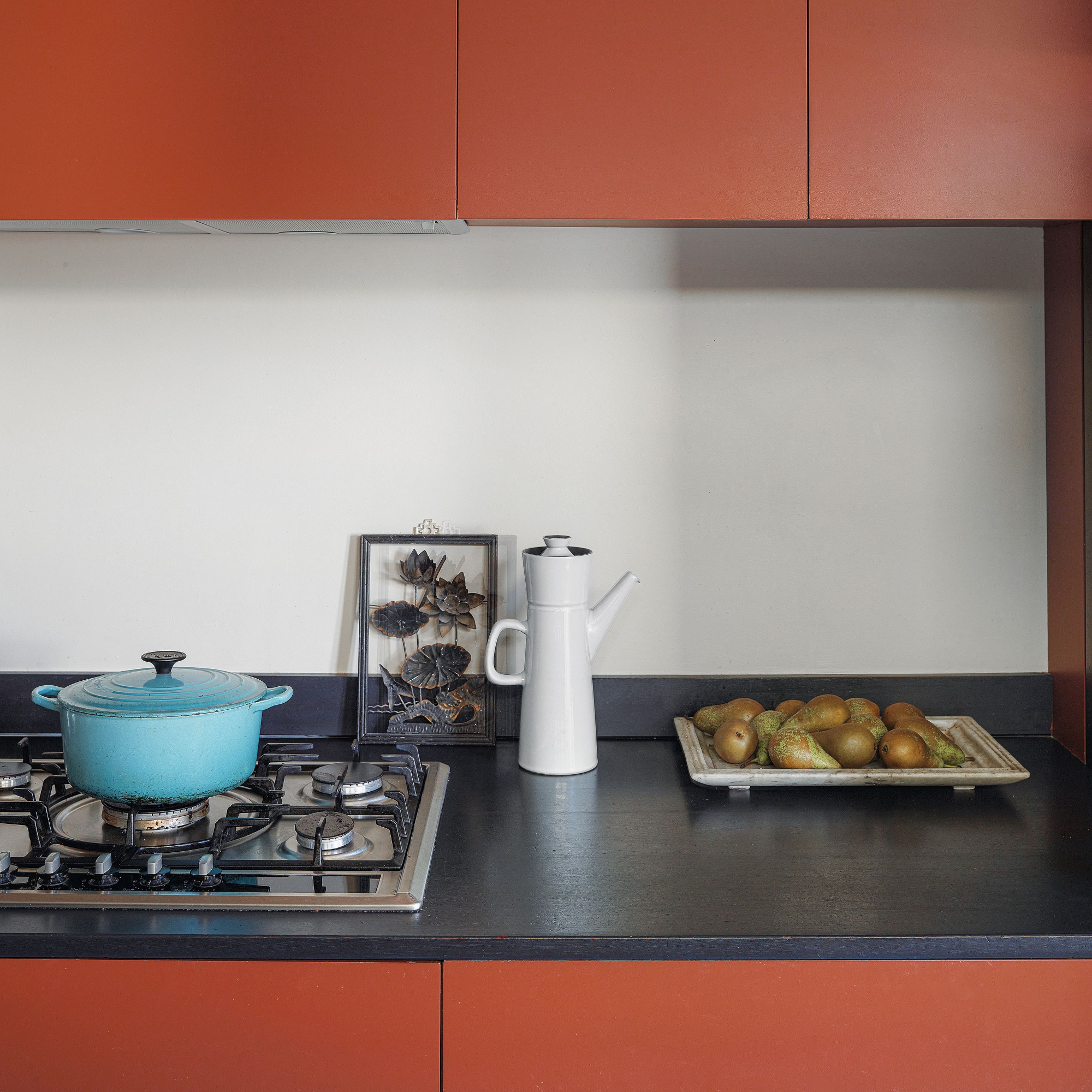 I’ve found a stunning £40 buy that rivals Le Creuset at Wilko - this casserole dish is a dead ringer for one of the most summery colourways
I’ve found a stunning £40 buy that rivals Le Creuset at Wilko - this casserole dish is a dead ringer for one of the most summery colourwaysYou just can't beat finding a great Le Creuset alternative
By Kezia Reynolds
-
 This beautiful mixing bowl is the unexpected star of so many kitchens – including Mary Berry's and the Bake Off tent
This beautiful mixing bowl is the unexpected star of so many kitchens – including Mary Berry's and the Bake Off tentThis earthenware bowl proves that you don't have to spend a huge amount for a classic kitchen addition
By Molly Cleary
-
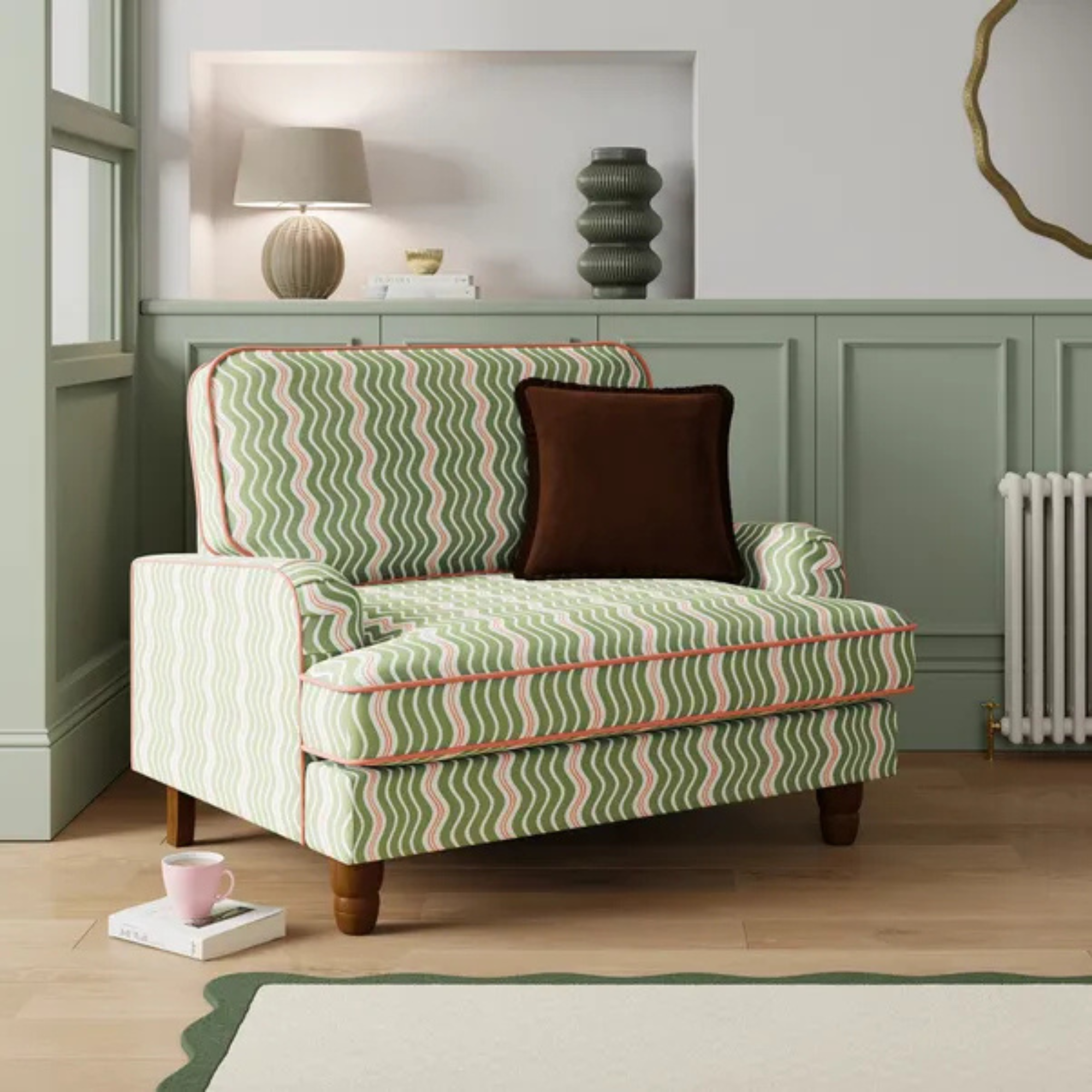 Dunelm has given its cult snuggle chair a new look - it's swapped classic stripes for another emerging pattern trend
Dunelm has given its cult snuggle chair a new look - it's swapped classic stripes for another emerging pattern trendI'm obsessed with this fresh new style
By Kezia Reynolds
-
 I tried Joseph Joseph's pan set with foldable handles – the space-saving design is just one of the many highlights
I tried Joseph Joseph's pan set with foldable handles – the space-saving design is just one of the many highlightsSmall kitchen? I tested this innovative Joseph Joseph space-savvy set which has foldable handles — and I loved it
By Annie Collyer
-
 As a stylist, I spend hours looking for bedding for photoshoots, and I just spotted these 6 expensive-looking sets at M&S
As a stylist, I spend hours looking for bedding for photoshoots, and I just spotted these 6 expensive-looking sets at M&SGet a little luxury at a high-street price
By Laurie Davidson
-
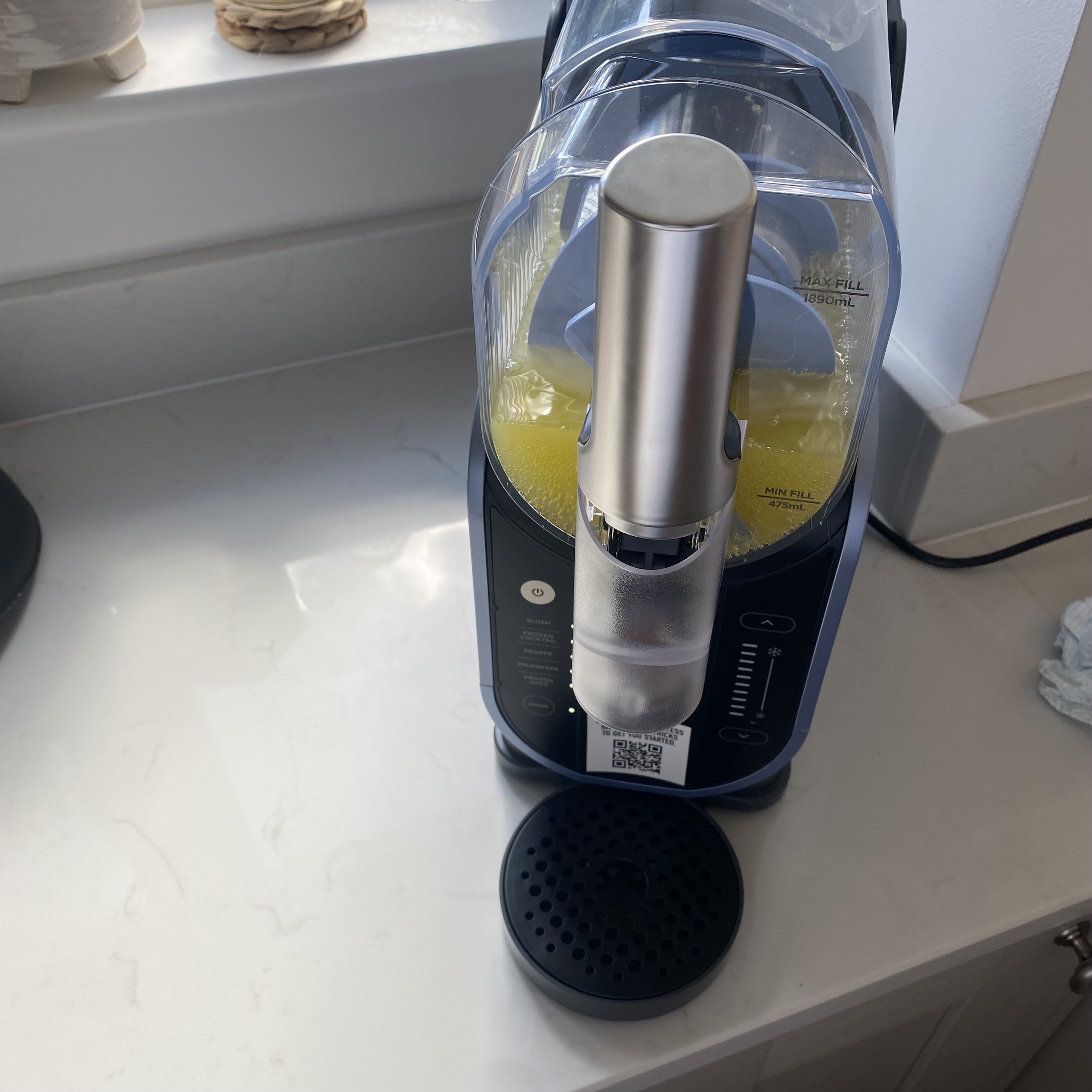 I've been waiting to try out the Ninja Slushi for months – this is what happened the first time I tried it
I've been waiting to try out the Ninja Slushi for months – this is what happened the first time I tried itThe Ninja Slushi is the stuff of dreams for summer entertaining
By Molly Cleary